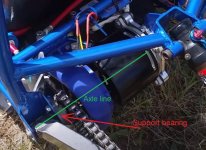Hi Fellow EV Enthusiasts!
I need help with a motor controller issue I had late last season, and that I'm just now getting around to wanting to fix. First though, I should probably provide some background.
I've been swapping an existing Birel BY-30 race kart chassis from the stock 208cc ICE to a 25kW 120100 outrunner motor controlled by a Kelly KBL96351E and powered by a 32S LiFePo pack using A123 Systems AMP20M1HD-A cells.
I had some adapter plates and and custom sprockets CNC machined to mount the motor, and allow for a 2:1 gear reduction via a 15T sprocket on the motor output shaft, and a 30T sprocket on the rear axle. Everything mounted up really nicely with a 420 chain, and spins smoothly with great alignment.
It took me the better part of a year to get it all up and running, and on the test stand everything seemed pretty good with the exception of the motor not running very smoothly. It made a bit of an unpleasant "tinging" sound when running in one direction, and was quite a bit smoother and quieter in the other direction. I played around with phase wiring and the hall sensors, but the results were always the same. Having no other real reference, I figured this was just the way the controller was, and took it out for its maiden voyage. Low speed control was a bit clunky, and acceleration was not all that brisk since I had the controller set to very soft acceleration settings for testing. I slowly got the kart up to speed (likely around 60kph) in an empty parking lot, and suddenly I herd a bang, followed by an abrupt lockup of the rear axel, and smoke. I hit the cutoff on the battery immediately, and hopped out. The smoke was coming from the three phase wires coming out of the motor, and the motor itself must have been close to 90-100c as a quick touch of the surface lightly burned me. At least one of the motor phases was shorted, and I pushed the kart back home with my tail between my legs.
My first reaction was to blame the crappy motor. After all, the battery is more than capable of delivering the needed power, the Kelly controllers have a reputation for being bomb-proof and excellent overall, and the motor was some cheap thing I bought off Alibaba that I had never seen anyone else use. I did a quick internet search hoping to confirm my suspicions, but instead I found this:
https://www.youtube.com/watch?v=cG7sEFBNiSQ
So yeah... doesn't look like it's a motor limitation. For the record, I was having a lot less fun than that guy when mine blew up
This brought me to the controller. The fellow in the video above is using a KLS96501-8080I which is a sine-wave controller from Kelly capable of 70,000 ERPM. I had a quick look at my controller and it's only good for 40,000 ERPM and that's likely where I was when the motor self destructed. Clearly that was a critical oversight on my part given the motor is a 28 pole capable of 5000RPM with my battery voltage.
So now that you have the whole story, here's my question: Was the ERPM limitation of the controller likely my problem? Did the controller lose position and liquify one of the motor windings when the ERPM was exceeded? What's my best option to fix this? I have a backup motor, but I'd rather not blow it up as well.
Kelly offers upgrades for my controller to 70,000 ERPM or 100,000 ERPM so I could contact them and see if that's an option. To be honest though, I'm really not very happy with the lack of setup capability with that controller, and the clunky running of the motor in the forward direction. It really doesn't sound all that great, and there is no auto-tuning or diagnostics in the setup software that could help me.
Does anyone have a suggestion for a controller they know would work well with this motor? Keep in mind my battery is a little over 100V at full charge, and I would like to be able to supply 300A peaks to the motor, and at least 200A continuous.
I will attach some pictures of my setup below. Any help or suggestions would be welcome and appreciated. I will post updates here as I go along to hopefully a more successful second maiden voyage!
Cheers,
Owen
I need help with a motor controller issue I had late last season, and that I'm just now getting around to wanting to fix. First though, I should probably provide some background.
I've been swapping an existing Birel BY-30 race kart chassis from the stock 208cc ICE to a 25kW 120100 outrunner motor controlled by a Kelly KBL96351E and powered by a 32S LiFePo pack using A123 Systems AMP20M1HD-A cells.
I had some adapter plates and and custom sprockets CNC machined to mount the motor, and allow for a 2:1 gear reduction via a 15T sprocket on the motor output shaft, and a 30T sprocket on the rear axle. Everything mounted up really nicely with a 420 chain, and spins smoothly with great alignment.
It took me the better part of a year to get it all up and running, and on the test stand everything seemed pretty good with the exception of the motor not running very smoothly. It made a bit of an unpleasant "tinging" sound when running in one direction, and was quite a bit smoother and quieter in the other direction. I played around with phase wiring and the hall sensors, but the results were always the same. Having no other real reference, I figured this was just the way the controller was, and took it out for its maiden voyage. Low speed control was a bit clunky, and acceleration was not all that brisk since I had the controller set to very soft acceleration settings for testing. I slowly got the kart up to speed (likely around 60kph) in an empty parking lot, and suddenly I herd a bang, followed by an abrupt lockup of the rear axel, and smoke. I hit the cutoff on the battery immediately, and hopped out. The smoke was coming from the three phase wires coming out of the motor, and the motor itself must have been close to 90-100c as a quick touch of the surface lightly burned me. At least one of the motor phases was shorted, and I pushed the kart back home with my tail between my legs.
My first reaction was to blame the crappy motor. After all, the battery is more than capable of delivering the needed power, the Kelly controllers have a reputation for being bomb-proof and excellent overall, and the motor was some cheap thing I bought off Alibaba that I had never seen anyone else use. I did a quick internet search hoping to confirm my suspicions, but instead I found this:
https://www.youtube.com/watch?v=cG7sEFBNiSQ
So yeah... doesn't look like it's a motor limitation. For the record, I was having a lot less fun than that guy when mine blew up
This brought me to the controller. The fellow in the video above is using a KLS96501-8080I which is a sine-wave controller from Kelly capable of 70,000 ERPM. I had a quick look at my controller and it's only good for 40,000 ERPM and that's likely where I was when the motor self destructed. Clearly that was a critical oversight on my part given the motor is a 28 pole capable of 5000RPM with my battery voltage.
So now that you have the whole story, here's my question: Was the ERPM limitation of the controller likely my problem? Did the controller lose position and liquify one of the motor windings when the ERPM was exceeded? What's my best option to fix this? I have a backup motor, but I'd rather not blow it up as well.
Kelly offers upgrades for my controller to 70,000 ERPM or 100,000 ERPM so I could contact them and see if that's an option. To be honest though, I'm really not very happy with the lack of setup capability with that controller, and the clunky running of the motor in the forward direction. It really doesn't sound all that great, and there is no auto-tuning or diagnostics in the setup software that could help me.
Does anyone have a suggestion for a controller they know would work well with this motor? Keep in mind my battery is a little over 100V at full charge, and I would like to be able to supply 300A peaks to the motor, and at least 200A continuous.
I will attach some pictures of my setup below. Any help or suggestions would be welcome and appreciated. I will post updates here as I go along to hopefully a more successful second maiden voyage!
Cheers,
Owen
Attachments
-
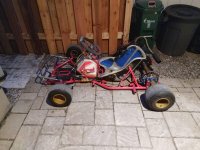 IMG_20190506_203910.jpg368.5 KB · Views: 2,263
IMG_20190506_203910.jpg368.5 KB · Views: 2,263 -
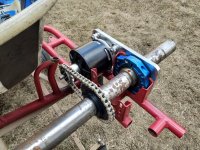 IMG_20200411_135337.jpg621 KB · Views: 2,263
IMG_20200411_135337.jpg621 KB · Views: 2,263 -
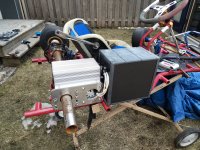 IMG_20200411_135528.jpg703.2 KB · Views: 2,262
IMG_20200411_135528.jpg703.2 KB · Views: 2,262 -
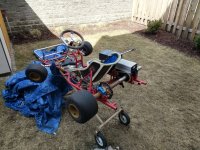 IMG_20200411_135558.jpg797.9 KB · Views: 2,262
IMG_20200411_135558.jpg797.9 KB · Views: 2,262 -
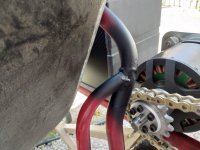 IMG_20200510_152841.jpg306.1 KB · Views: 2,262
IMG_20200510_152841.jpg306.1 KB · Views: 2,262 -
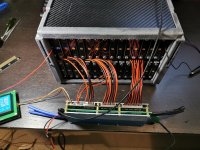 IMG_20200608_133839.jpg492.6 KB · Views: 2,262
IMG_20200608_133839.jpg492.6 KB · Views: 2,262 -
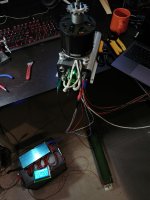 IMG_20200621_120024.jpg190.6 KB · Views: 2,262
IMG_20200621_120024.jpg190.6 KB · Views: 2,262 -
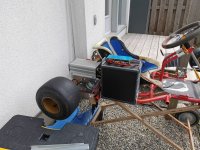 IMG_20200625_151927.jpg642.2 KB · Views: 2,263
IMG_20200625_151927.jpg642.2 KB · Views: 2,263


